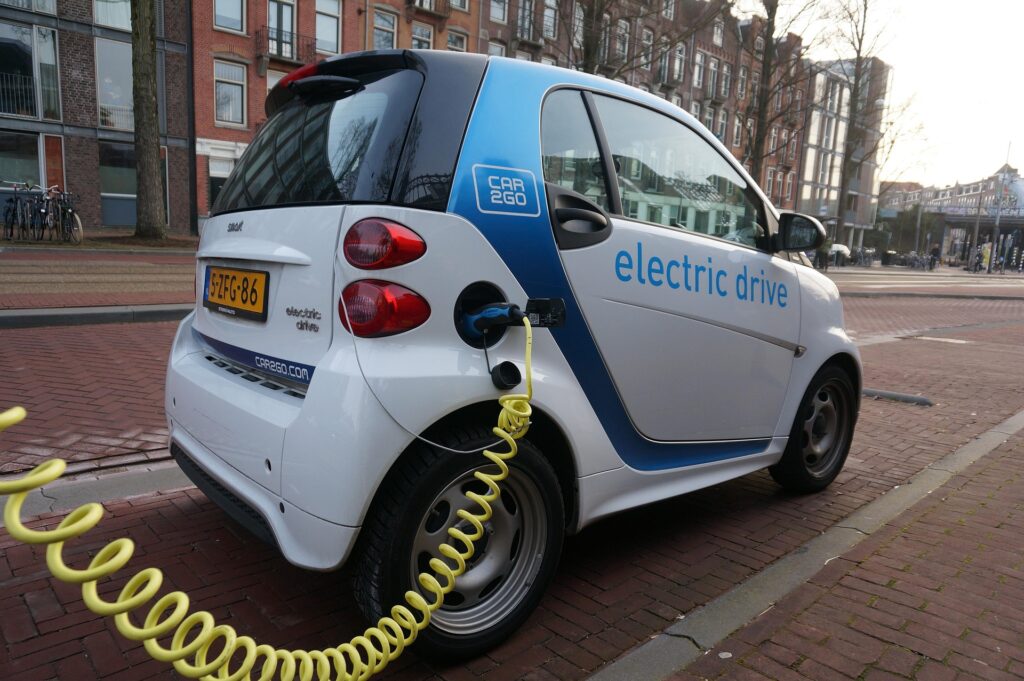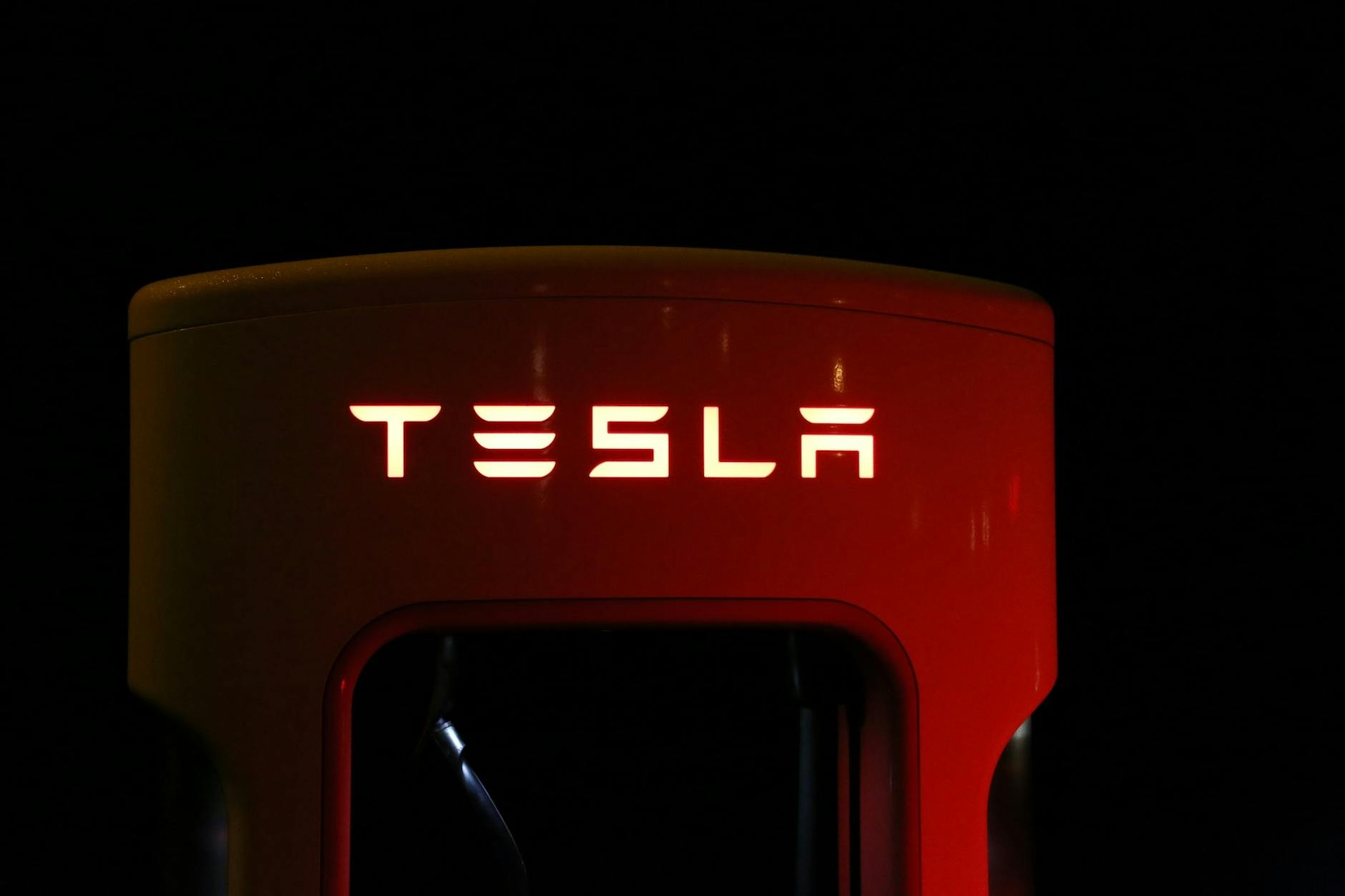
As electric vehicles (EVs) surge in popularity, a crucial decision awaits new owners: Level 1 or Level 2 charging? 🔌🚗 This choice can significantly impact your EV experience, from charging speeds to installation costs. Imagine coming home after a long day, only to find your car won’t have enough charge for tomorrow’s commute. Or worse, planning a road trip but spending more time at charging stations than exploring your destination. Level 1 vs Level 2 EV Chargers.
Don’t let charging anxiety hold you back from embracing the EV revolution! 💪 Understanding the key differences between Level 1 and Level 2 chargers is essential for making an informed decision. While Level 1 chargers offer convenience with standard household outlets, Level 2 chargers promise faster charging times and advanced features. But which one is right for you?
In this blog post, we’ll dive deep into the world of EV charging, exploring the pros and cons of Level 1 and Level 2 chargers. We’ll break down their charging speeds, installation requirements, and costs to help you make the best choice for your lifestyle and budget. Whether you’re a new EV owner or considering the switch, this guide will equip you with the knowledge to power up your electric journey efficiently and confidently. Let’s plug in and get started! ⚡
Understanding Level 1 EV Chargers – Level 1 vs Level 2 EV Chargers

A. Basic features and functionality
Level 1 EV chargers are the most basic and accessible charging option for electric vehicle owners. These chargers connect to standard 120-volt AC outlets, making them compatible with most electric vehicles. The charging process involves transferring electricity from the national grid to the vehicle’s battery, converting AC to DC power.Level 1 vs Level 2 EV Chargers
Key features of Level 1 EV chargers include:
- Compatibility with standard 120-volt outlets
- Use of Type 1 connector (SAE J1772) in North America
- Equipped with Mode 2 charging cables and In-Cable Control and Protection Device (IC-CPD)
- Maximum power delivery of 3.5 kW
- Onboard charger in the vehicle converts AC to DC power
B. Charging speed and range per hour – Level 1 vs Level 2 EV Chargers
Level 1 chargers are known for their slower charging speeds compared to other options. Here’s a breakdown of their charging capabilities:
| Aspect | Level 1 Charger Performance |
|---|---|
| Maximum power delivery | 3.5 kW |
| Voltage | 120 volts |
| Amperage | 20 amps |
| Range added per hour | Approximately 5 miles |
For example, charging a Tesla Model 3 with a 60 kWh battery using a Level 1 charger would take approximately 17 hours for a full charge.Level 1 vs Level 2 EV Chargers
C. Convenience and accessibility – Level 1 vs Level 2 EV Chargers
Despite their slower charging speed, Level 1 chargers offer several advantages in terms of convenience and accessibility:
- Low upfront costs
- No installation requirements
- Compatibility with all electric vehicles in the U.S. (BEVs and PHEVs)
- Accessible through standard infrastructure
- Ideal for home charging, especially overnight
Level 1 chargers are particularly suitable for plug-in hybrid electric vehicles (PHEVs) and short-distance drivers. They’re an integral part of daily routines, as around 80% of EV charging occurs at home.
D. Ideal use cases and limitations
Level 1 chargers are best suited for:
- EV owners with shorter commutes (under 40 miles)
- Those who can charge overnight
- PHEV owners
- Drivers with access to workplace charging
Limitations of Level 1 chargers include:
- Slow charging speed
- Less ideal for users with longer commutes
- Limited power availability
- May require scheduling overnight charging during off-peak hours
To maximize the use of Level 1 chargers, EV owners should:
- Utilize off-peak charging
- Monitor energy consumption
- Understand their vehicle’s range
- Ensure home electrical systems meet the charger’s demands
While Level 1 chargers offer a practical and cost-effective solution for many EV owners, it’s important to consider individual driving patterns and charging needs when deciding on the most suitable charging option.
Now that we have covered the basics of Level 1 EV chargers, let’s explore Level 2 EV chargers to understand how they differ and what additional benefits they might offer for electric vehicle owners.
Exploring Level 2 EV Chargers – Level 1 vs Level 2 EV Chargers

Now that we’ve explored Level 1 EV chargers, let’s dive into the more advanced world of Level 2 EV chargers. These charging systems offer significant improvements in speed and efficiency, making them a popular choice for both home and commercial applications.Level 1 vs Level 2 EV Chargers
Advanced Features and Capabilities
Level 2 EV chargers come equipped with a range of advanced features that set them apart from their Level 1 counterparts:
- Smart charging systems with centralized management
- Communication networks for data exchange
- Monitoring capabilities for enhanced efficiency
- Integration with smart grids and renewable energy sources
These features not only improve the charging experience but also contribute to a more sustainable energy ecosystem.
Charging Speed and Efficiency
One of the most significant advantages of Level 2 chargers is their superior charging speed:
| Aspect | Level 2 Charger Performance |
|---|---|
| Voltage | 208-240 volts |
| Power Output | 3 kW to 19.2 kW |
| Range Added per Hour | 20-60 miles |
| Full Charge Time | 2-8 hours |
Compared to Level 1 chargers, which typically require 11-20 hours for a full charge, Level 2 chargers offer a substantial improvement in efficiency. This makes them ideal for daily use and reduces range anxiety for EV owners.
Installation Requirements and Costs
Installing a Level 2 charger involves more complexity than a Level 1 setup:
- Requires a NEMA 14-50 outlet or hardwiring
- May necessitate electrical panel upgrades
- Local regulations might require permits
- Installation costs typically range from $500 to $800
Despite the higher initial investment, many users find that the improved charging speed and efficiency justify the cost. Additionally, various incentives may be available to help offset installation expenses.
Compatibility with Different EV Models
Level 2 chargers offer broad compatibility with various EV models:
- Use standard connectors like Mennekes, Tesla, and GB/T
- Compatible with most modern electric vehicles
- Charge via the vehicle’s onboard charger for simplified operation
When selecting a Level 2 charger, it’s essential to choose one that matches your specific EV’s requirements. Some popular options include:
- ChargePoint Level 2 EV Charger: Best for non-Tesla EVs
- Tesla Wall Connector: Designed exclusively for Tesla vehicles
- EMPORIA Level 2 EV Charger: Offers universal compatibility
With this comprehensive overview of Level 2 EV chargers, we’ve highlighted their advanced features, superior charging speeds, installation considerations, and compatibility with various EV models. Next, we’ll delve into the key differences between Level 1 and Level 2 chargers, helping you make an informed decision on which charging solution best suits your needs.
Key Differences Between Level 1 and Level 2 Chargers

Now that we’ve explored Level 2 EV chargers, let’s delve into the key differences between Level 1 and Level 2 chargers, helping you understand which option might be best for your needs.
Charging speed comparison – Level 1 vs Level 2 EV Chargers
The most significant difference between Level 1 and Level 2 chargers is their charging speed:
| Charger Type | Charging Speed | Full Charge Time |
|---|---|---|
| Level 1 | 3-5 miles/hour | 40-50 hours |
| Level 2 | 10-60 miles/hour | 3-8 hours |
Level 1 chargers, operating on standard 120V outlets, provide a slow charging rate of 2 to 5 miles of range per hour. This means it can take 40 to 50 hours to charge an EV to 80% capacity. In contrast, Level 2 chargers, utilizing 240V outlets, can add 10 to 60 miles of range per hour, allowing for a complete charge in just 3 to 8 hours.
Installation complexity
The installation requirements for these chargers differ significantly:
- Level 1 chargers:
- Require no installation
- Use standard 120V household outlets
- Ideal for immediate use in garages or driveways
- Level 2 chargers:
- Require professional installation
- Need a dedicated 240V circuit
- Installation costs range from $300 to $2,500
Level 1 chargers offer convenience and accessibility, as they can be plugged into any standard outlet. However, Level 2 chargers necessitate professional installation due to their higher voltage and amperage requirements, making them a more complex option to set up.
Initial and long-term costs
When considering costs, it’s important to look at both initial expenses and long-term efficiency:
- Initial costs:
- Level 1 chargers are essentially free, as they come with most EVs
- Level 2 chargers have higher upfront costs, including the charger itself and installation fees
- Long-term efficiency:
- Level 2 chargers operate at about 90% efficiency compared to 80% for Level 1
- Energy Star certified Level 2 chargers offer reduced standby power consumption
While Level 1 chargers have minimal initial costs, Level 2 chargers prove more economical over time due to their higher efficiency and faster charging capabilities.
Energy efficiency and power consumption
Level 2 chargers demonstrate superior energy efficiency:
- They operate at approximately 90% efficiency
- Smart features allow for monitoring energy use and scheduling charging during off-peak hours
- Energy Star certification ensures reduced standby power consumption
In comparison, Level 1 chargers operate at around 80% efficiency, making them less economical in the long run, especially for frequent charging needs.
With these key differences in mind, next, we’ll explore how to choose the right charger for your specific needs, considering factors such as your daily driving habits, budget constraints, and future EV plans.
Choosing the Right Charger for Your Needs – Level 1 vs Level 2 EV Chargers

Now that we’ve explored the key differences between Level 1 and Level 2 chargers, let’s focus on choosing the right charger for your needs. This decision is crucial as the electric vehicle (EV) market continues to grow, with projections indicating a rise from 10 million EVs in 2021 to approximately 125 million by 2040.
A. Assessing daily driving habits and charging requirements
When selecting an EV charger, it’s essential to consider your daily driving habits and charging needs. This assessment will help you determine whether a Level 1 or Level 2 charger is more suitable for your lifestyle.
| Factors to Consider | Level 1 Charger | Level 2 Charger |
|---|---|---|
| Daily mileage | Low (< 30 miles) | Medium to High (> 30 miles) |
| Charging time | Overnight | Few hours |
| Convenience | Limited | High |
| Installation | Simple | More complex |
B. Considering budget constraints
Budget plays a significant role in choosing between Level 1 and Level 2 chargers. While Level 1 chargers are generally more affordable, Level 2 chargers offer faster charging speeds and greater convenience.
- Level 1 chargers:
- Lower upfront cost
- May come included with your EV
- Minimal installation expenses
- Level 2 chargers:
- Higher initial investment
- Potential installation costs
- Long-term savings on charging time and efficiency
C. Evaluating home electrical system capabilities – Level 1 vs Level 2 EV Chargers
Before deciding on a charger, it’s crucial to assess your home’s electrical system:
- Check your electrical panel capacity
- Determine available amperage
- Consult with a licensed electrician for a professional evaluation
Level 1 chargers typically require a standard 120V outlet, while Level 2 chargers need a 240V circuit. Ensure your home can accommodate the charger you choose without requiring extensive electrical upgrades.
D. Future-proofing your charging setup
As the EV market expands, it’s wise to consider future-proofing your charging setup:
- Opt for a charger with adjustable amperage settings
- Choose a model with smart charging capabilities
- Consider the potential for multiple EVs in your household
By selecting a versatile charger, you’ll be better prepared for advancements in EV technology and potential changes in your charging needs.
When making your decision, remember that strategic planning is key. Just as EV charging station placement is crucial for public infrastructure, your home charging setup should be optimized for convenience and efficiency. Consider factors such as:
- Proximity to your parking area
- Protection from weather elements
- Potential for future expansion
By carefully evaluating these aspects, you’ll be able to choose the right charger that meets your current needs while accommodating future developments in EV technology.
With these considerations in mind, we’ll next explore additional factors to keep in mind when setting up your EV charging system, including advanced features and potential challenges you may encounter.
Additional Considerations for EV Charging

Now that we’ve covered how to choose the right charger for your needs, let’s explore some additional considerations for EV charging that are crucial for a comprehensive understanding of the topic.
Smart features and mobile app integration
As EV charging infrastructure evolves, smart features and mobile app integration have become increasingly important. These technologies enhance the user experience and provide valuable data for both consumers and infrastructure planners. Many modern EV chargers come equipped with:
- Real-time availability status
- Remote start/stop functionality
- Charging session monitoring
- Payment processing capabilities
This integration allows EV owners to easily locate available charging stations, plan their routes, and manage their charging sessions efficiently. Additionally, it provides valuable insights into charging patterns, helping infrastructure developers optimize station placement and capacity.
Indoor vs. outdoor installation factors
When considering EV charger installation, the location plays a crucial role in determining the type of charger and installation requirements. Here’s a comparison of indoor and outdoor installation factors:
| Factor | Indoor Installation | Outdoor Installation |
|---|---|---|
| Weather protection | Minimal required | Weatherproofing essential |
| Access | Limited to building occupants | Potentially public access |
| Electrical requirements | Often simpler | May need additional wiring |
| Space constraints | May be limited | Generally more flexible |
| Security concerns | Typically lower | Higher, may need additional measures |
Government incentives for Level 2 charger installations
To support the growth of EV adoption and charging infrastructure, various government incentives are available for Level 2 charger installations. These incentives aim to make EV charging more accessible and affordable. Some key points to consider:
- Federal tax credits may be available for residential and commercial installations
- State and local governments often offer additional rebates or grants
- Utilities may provide incentives or special rates for EV charging
- Some incentives are specifically targeted at multi-family dwellings or workplace charging
These incentives can significantly reduce the cost of installing Level 2 chargers, making them more attractive for homeowners and businesses alike.
Public charging options and their roles
While home charging is convenient for many EV owners, public charging options play a vital role in supporting widespread EV adoption. The reference content highlights the importance of a robust public charging network:
- Addressing range anxiety: Public chargers help alleviate concerns about long-distance travel and unexpected charging needs.
- Supporting multi-family dwelling residents: Those unable to install home chargers can rely on public options.
- Enhancing accessibility: Public chargers make EV ownership more feasible for a broader range of consumers, including lower-income individuals.
- Economic development: Investment in public charging infrastructure creates jobs and supports local businesses.
The U.S. is projected to need approximately 12.9 million charging ports by 2030, including 140,000 DC fast charging ports. However, current infrastructure falls short with only about 161,562 public and private charging ports available. This underscores the importance of continued investment in public charging options to support the growing EV market.
Public charging stations come in various types, including Level 2 and DC fast charging, each serving different needs:
- Level 2 chargers: Suitable for longer parking durations (e.g., workplaces, shopping centers)
- DC fast chargers: Ideal for quick charging during long trips or for those needing a rapid charge
As the EV market continues to grow, addressing challenges such as equitable access, standardization, and reliability of public charging stations will be crucial for supporting the transition to electric mobility and achieving long-term carbon-free goals.

Choosing between Level 1 and Level 2 EV chargers ultimately depends on your individual needs, driving habits, and budget. Level 1 chargers offer convenience and low upfront costs, making them suitable for new EV owners with short daily commutes. However, their slow charging speed limits practicality for long-distance travel. On the other hand, Level 2 chargers provide significantly faster charging times and advanced features, catering to frequent drivers and households with multiple EVs. While they require professional installation and higher initial costs, they offer greater efficiency and reduced charging times in the long run.
As the EV market continues to grow, it’s essential to consider future needs when selecting a charger. Whether you opt for the simplicity of a Level 1 charger or invest in a more powerful Level 2 solution, ensure your choice aligns with your lifestyle and charging requirements. Remember to explore potential government incentives for Level 2 installations, which can help offset costs and support the transition to more advanced charging infrastructure. By making an informed decision, you’ll enhance your EV ownership experience and contribute to a more sustainable future of transportation.

Pingback: Top Electric Vehicles Under $30,000 in 2025 - Electrodrive